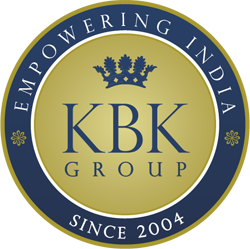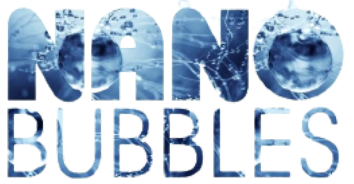-
Call Us
+91 9999775018
-
Email Us
sales@nanobubblestechnology.com
-
Global Certificate
ISO 9001:2017
- Get A Quote
Nanobubbles Generator Device Test at IIT Ropar

Tests Conducted at IIT Ropar
KBK Group conducted a Nanobubbles Generator Device Machine test at IIT Ropar. The tests were conducted under the able guidance of our esteemed Technical Consultants – Dr. Neelkanth Nirmalkar and Kalyani Agarwal. The sole purpose of the test was for evaluating the effectiveness of the Indigenous Nano Bubbles Device developed by KBK Group for treating waste water for various agriculture applications.
Hereby, we have the test details and final report from our Technical Consultants.
Conducting the Test at IIT Ropar




A report on Nanobubble Generator by KBK Group
Nanobubbles are a novel type of nanoscale bubble system. They have a typical mean spherical diameter of 100-200 nanometers and they exist in bulk liquid. The most peculiar characteristic of these bulk nanobubbles is their extraordinary longevity. Whilst the lifetime of macrobubbles (>1 mm) is of the order of minutes and that of microbubbles (1-1000 microns) is on the order of seconds, nanobubbles have been reported to last for weeks and months1. In addition, nanobubble possesses high surface to volume ratio (~6/ d ), high mass transfer coefficient, long lasting stability and negative surface charge. How micro-nanobubble works? The working principle of micronanobubbles are similar to that of flotation. The fine solids, particulate matters, oil etc. can be separated by absorbing at the charged bubble interface and due to the buoyancy, it rises and forms froth on the surface of the water. Apart from the flotation of suspended solid, it also kills the microorganisms and degrades the organic matters (such as phenols etc.) due to the generation of free radical during collapse of microbubbles1. The effects have been seen be even more pronounced many folds upon use of ozone nanobubbles. More recently, it is found that the presence of micronanobubbles improves (300%) the rate of absorption of heavy metals (e.g., Pb etc.) in the activated charcoal. In addition to the application in waste water treatment, the gas-liquid systems also involve in agriculture, healthcare, environmental, food processing, chemical and petrochemical industries1. In this report, the nanobubble generator from KBK group is characterized in terms of size, number density, surface charge, dissolved oxygen, electrical conductivity, pH and surface tension etc. The effect of operating pressure on the number density has been examined systematically. Furthermore, the evidence of being nanobubble have been proved by freezing and thawing technique1. Based on the experimental data, we found that the number density of nanobubbles is approximately 100 million with size range 100-150 nm. A significant improvement (6-fold increase) on the Dissolved oxygen (DO) were observed. Another evidence of generation of nanobubbles are based on the electrical conductivity and pH of the nanobubble sample as they are increasing. The negative surface charge relates its colloidal stability in the bulk water and thus explains its longer stability in the water bodies.
Summary of the experimental results obtained
- Typical bubble number density is found to be 8 1.18 10 bubbles/mL (100 million bubbles per mL at 4.8 bar saturation pressure) which translates into 14 1.18 10 bubbles/mL per hour for 10 m3/hr capacity machine.
- The mean diameter of the nanobubbles were found to be 100-150 nm which is good for the enhancement of the oxygen in the water bodies. So smaller the size better the dissolved oxygen in the water.
- The evidence of nanobubbles were examined by freezing and thawing techniques1. 96% of nano entities were observed to be gas filled nanobubbles.
- Recirculation mode enhances the DO level by 6-fold.
- Increase in the electrical conductivity denotes formation of free ions in the water which is good for killing the harmful microorganism.
Nanobubbles were found be stable more than a week.
3. Results and Discussion
3.1 Evidence of Nanobubbles
One of the key questions is that this could be solid nanoparticles rather than nanobubbles filled with gas. Therefore, it is very important to distinguish between bubbles and particles. One of best and simple method is to use freeze and thawing techniques. Figure 2 shows the bubbles distribution before and after freeze-thaw experiments. Evidently, most of the nano entities were seen to disappear. Therefore, we confirm the presence gas filled nanobubbles in the sample.
 Fig. 1 Number distribution of nanobubbles (a) Before freeze-thaw (b) After freeze-thaw.
Fig. 1 Number distribution of nanobubbles (a) Before freeze-thaw (b) After freeze-thaw.

Fig. 2 Bubbles per frame during freeze thaw experiments.

Fig. 3: Effect of operating pressure on bubble per frame.
Fig.2 suggests the drop in bubbles per frame from 18 to 1 bubble per frame after freezing and thawing.
3.2 Effect of operating pressure
The effect of operating pressure is examined and found a linear increase in the number of nanobubbles with increase in operating pressure. This is obvious due to efficient mixing of gas and liquid. Fig. 3 shows the effect of operating pressure on bubbles per frame. Clearly, a drastic increase in bubble number density can be achieved. The corresponding NTA image of nanobubbles and distribution are shown in Fig. 4 and Fig. 5.

Fig. 4 An NTA monograph of nanobubbles at 3.5 bar pressure.

Fig. 5 Bubble number density of nanobubbles (a) 3.5 bar pressure (b) 4.8 bar pressure
3.3 Long term stability of Nanobubbles
The stability of nanobubbles were monitored for a week and the bubble per frame is plot against the days in Fig. 6. Clearly nanobubbles are seen to be stable atleast for a week.

3.4 Dissolved oxygen, pH, electrical conductivity of nanobubbles
Figure 7a, b and c represent the recorded data of DO, pH and electrical conductivity. It is evident that 6-fold increase in the DO level, no change in pH (means no foreign contamination from the machine part), slight increase in the conductivity denotes the formation of radicals to kill the bacteria and germs in the water bodies.



Fig. 7 (a) Dissolved oxygen (b) PH (c) Electrical conductivity
Frequently asked questions
Question: 20 nanobubbles in one frame (1-2mg sample) result into how many nanobubbles per m3. How many no. of nano bubbles a device of 10 m3 per hour capacity is releasing in one hour?
Ans: 20 nanobubbles per frame translates approximately half a billion nanobubbles per mL. For 10 cubic meter machine it will generate hundred trillion (1014) of nanobubbles per hour.
Question: Considering the skepticism globally about the unknown future environmental impacts of Nano Bubbles, should we always use clean water for Nano Bubble Generation for treatment of the contaminated ponds/lakes/ sewage water or we can continue to recycle the contaminated pond/lake/sewage water for generation and release of Nano Bubbles.
Answer: We must recycle the contaminated water, nanobubbles are even more stable in contaminated water than the distilled water. There is no point in using clean water for nanobubble generation.
Question: What should be the optimum DO level to be achieved and maintained to ensure that the negative impacts of the higher levels of DO is avoided?
Answer: The percentage saturation of DO level should not exceed 110%. More than this leads to bubble disease in aquatic animals. Online monitoring must be performed.
Question: What is the recommended pressure for the device for getting the best results of Nano Bubbles generation?
Answer: There is thumb rule but without performing a systematic experiment it’s difficult to tell precise number.
Question: Should we change our narrative from Oxygen enriched Nano Bubbles to Oxygen enriched Ultra Fine Bubbles in all our communications to ensure greater global receptivity.
Answer: From business point of view you better use ultrafine bubbles.
6) What will be the effectiveness of Nano Bubbles on the Marine water treatment?
Answer: Earlier there was a doubt about the existence of nanobubbles in salt water because of existing theory but recent 3 papers strongly report the generation of nanobubbles in salt water.
7) How effective would the Nano Bubbles treatment be for flowing waters of rivers/canals.
Answer: Nanobubbles are equally effective for flowing water system. The more efficient nanobubble generator needs to be designed which can produce huge number of bubbles in one pass only.



